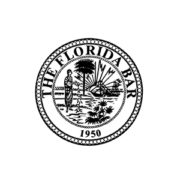Business Law Section Updates Pro Bono Guide
/0 Comentarios/en News Release /por Jacques HartIf Spider-Man can do it, then so can the Business Law Section and other Florida lawyers.
That’s the logic of section Chair Leyza B. Florin, explaining the section’s long-standing web of support for pro bono activities, just reinforced with the new revision of its Pro Bono Best Practices Guide.
“It goes back to the Peter Parker principle, ‘with great power comes great responsibility,’” Florin said.
But there are also hard numbers and practical reasons. The section’s mission is “to promote business-friendly initiatives” and pro bono falls squarely into that mission, she said, because studies have shown each dollar of civil legal services provided to low-income clients yields $7.19 of economic benefits.
Carlos Sardi, chair of the section’s Pro Bono Committee, said the new guide covers the Supreme Court’s 2017 approval of Bar Rule 4-6.6, which addresses conflicts of interest affecting short-term pro bono representations. The Pro Bono Best Practices Guide has been posted for free on the Florida Business Law website.
“One of the things that we’re trying to instill not only in our members but to all of our colleagues is there are tools out there that can help” in providing pro bono, Sardi said. “It’s a starting point for such efforts or to retool and rethink their pro bono policy to encourage their colleagues to do the right thing and provide pro bono services to the most-needy members of our community.
“This tool provides the mechanisms all the way from intake to representation, even if it’s on a short term based on the safe harbor in Rule 4-6.6.”
The updating is the first freshening of the guide since 2014, Sardi said, and was prompted in part by the Supreme Court’s adoption in 2017 of Bar Rule 4-6.6.
“It provides a safe harbor for those who provide short-term, limited legal services [such as at a legal clinic]…for them to be able to provide services on a short term without being on the hook for representing a client,” he said. “We included that new rule into our guide basically for our members to be aware of the impact it has on your internal checking and intake mechanism that you use to run conflict searches.”
According to a November 15, 2017, Bar News column by Assistant Ethics Counsel Hey-Yen Cam Bailey the rule “applies to lawyers who provide short-term limited legal services through a program sponsored by a nonprofit organization, court, government agency, bar association, or ABA-accredited law school. Although attorney-client relationships are still established through these programs, neither the lawyer nor client expect the relationship to last beyond that short-term representation. Under the rule, a lawyer participating in these programs will only be subject to Rules 4-1.7 and 4-1.9(a), conflict of interest rules regarding current and former clients, if the lawyer knows that the representation involves a conflict of interest.”
The guide addresses intake, initial interviews, engagement letters, opening a file, deciding what is pro bono, the safe harbor in Rule 4-6.6, how pro bono credit is determined, using nonlawyer employees for pro bono cases, determining if costs will be charged, and dividing fees, costs, and awards that may come from a pro bono case. Also covered are having law firm staff dedicated to pro bono work to satisfy the guidelines in Rule 4-6.1(c) and getting such plans approved by circuit pro bono committees.
Aside from presenting the considerations in outline form, there is also extensive commentary on important points and issues.
Working with legal aid offices and pro bono circuit committees is important, Sardi said, because “you can always be more sensitive to the immediate pro bono needs in your community.
“The pro bono needs may be completely different in northern Florida than in the southern part of our state. Obviously that connectivity with the local area is very important in setting your pro bono firm-wide policy.”
Support for pro bono is in the DNA of the section, as shown by the handbook and other efforts.
“I’ve been an active member of the Business Law Section since 2006. I don’t remember a time where the Pro Bono Committee was not present and pro bono services were not promoted,” Sardi said. “One of the missions of the Pro Bono Committee is to achieve 100% participation of our members. Last year, when we took on the task of reviewing how well we are doing, well over 60% of our members in one way or another provided pro bono services. It’s a work in progress but it’s a fantastic achievement by our members. We continue to promote our pro bono heroes and services.”
Members may also take to heart Florin’s point that effective pro bono is good for the business community.
She cited a 2016 study, Economic Impacts of Civil Legal Aid Organization in Florida conducted by The Resource for Great Programs, which found that in 2015 civil legal aid had garnered for Floridians $120.6 million in Social Security benefits, $70.7 million in Medicare and Medicaid payments, and $2.7 million in veterans benefits.
That in turn boosted business income by $274.8 million, created 2,243 jobs and avoided $2.9 million in emergency shelter costs, $50.6 million in foreclosure costs, and $6.9 million in domestic violence costs.
“Pro bono work provides a benefit to the Florida legal community that may not otherwise be available,” Florin said. “The members of our section have skills that are in short supply and in great need.”
Sequor Law

SOBRE NOSOTROS
ENLACES RÁPIDOS
DIRECCIÓN
MIAMI
1111 Brickell Avenue
Suite 1250
Miami, Florida 33131
WASHINGTON, D.C.
1200 G Street NW
Suite 340
Washington, D.C. 20005
DATOS DE CONTACTO
Teléfono: (+1) 305-372-8282
Fax: (+1) 305-372-8202
SÍGUENOS EN:
NUESTRA HOJA INFORMATIVA
Regístrese para recibir noticias de la industria y la empresa todos los meses.



Sequor Law es una firma internacional de abogados que representa instituciones financieras, gobiernos soberanos, empresas estatales, empresas públicas y privadas, profesionales de insolvencia y clientes individuales en las áreas de recuperación de activos, fraude financiero, insolvencia y litigios de servicios financieros.